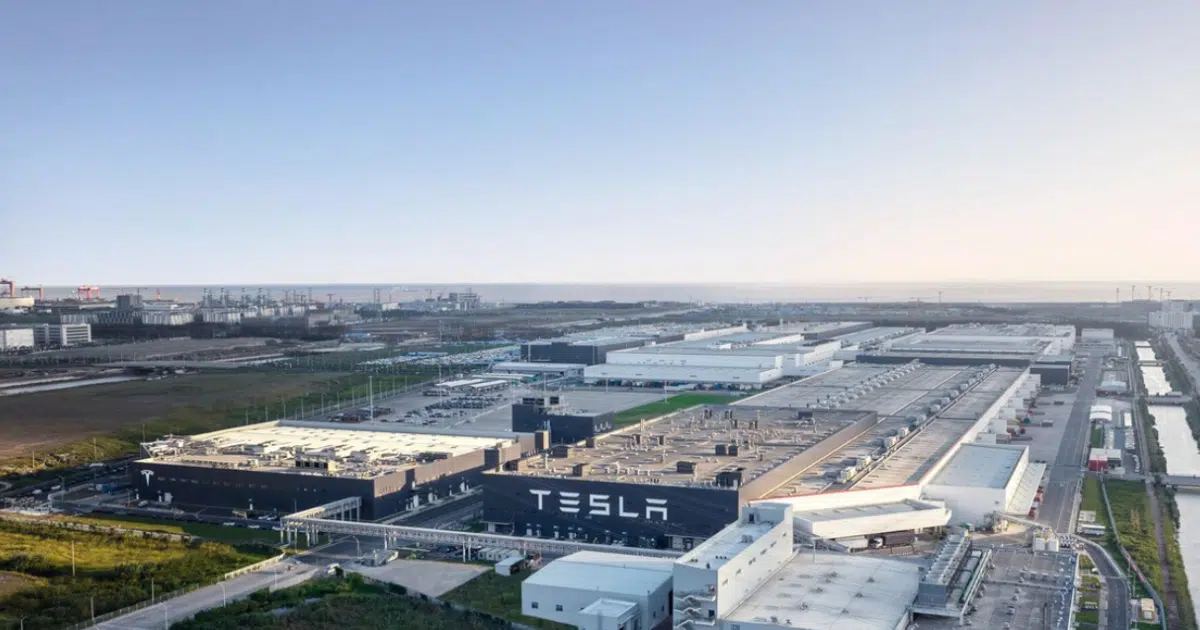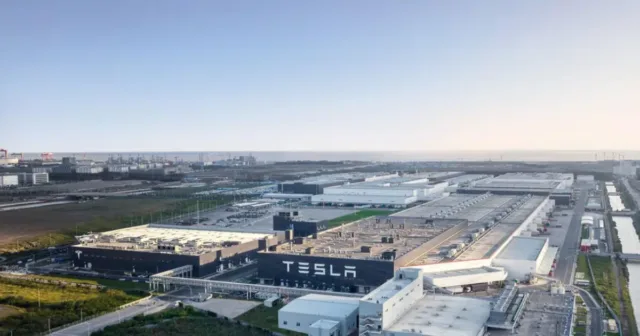
Tesla’s strategic pivot into energy storage has taken a monumental leap forward with a $557 million agreement to build China’s largest battery facility. This landmark deal signals Tesla’s evolution beyond automotive manufacturing into a comprehensive energy solutions provider. The Shanghai-based project will significantly enhance China’s ability to integrate renewable energy sources into its massive electrical grid system.
Tesla’s transformative energy storage project in China
The Chinese government has commissioned Tesla to develop the country’s largest grid-scale energy storage station, surpassing the existing 1 GWh battery park in Shandong province. This ambitious project comes with a substantial investment of 4 billion yuan (approximately $557 million) from Shanghai municipal authorities. The facility is designed to actively participate in China’s electricity spot market, representing a crucial infrastructure development for the world’s largest power grid.
The timing of this partnership reveals China’s practical approach to international business relations. Despite ongoing trade tensions with the United States, Chinese officials recognize Tesla’s unique capabilities in battery technology and grid-scale energy solutions. This pragmatic decision underscores the urgent need for advanced energy storage systems as China rapidly expands its renewable energy capacity.
When completed in 2027, this groundbreaking facility will serve a vital function in China’s electricity infrastructure. It will purchase and store energy during periods of low demand and pricing, then sell it back to the grid during consumption peaks. This capability is essential for balancing electrical distribution systems and preventing potential blackouts – particularly in a grid increasingly powered by intermittent renewable sources.
Tesla’s energy division has been strategically expanding, gradually becoming a fundamental pillar of the company’s business model. This diversification mirrors CEO Elon Musk’s broader vision for Tesla as an integrated sustainable energy company rather than merely a vehicle manufacturer – a vision now being validated through major projects like this Shanghai facility.
Megapack technology powering China’s energy transition
The technical foundation of this ambitious project lies in Tesla’s Megapack units – large-scale battery storage systems that each provide 3.9 MWh of capacity. These modular units enable rapid deployment of substantial energy storage capabilities, offering grid operators unprecedented flexibility in managing power flows. The Megapack technology has already proven its effectiveness in numerous installations worldwide, making it an ideal solution for China’s growing energy storage needs.
Tesla’s selection of Shanghai for this landmark project builds upon existing infrastructure investments in the region. In February 2025, the company inaugurated a specialized Megapack production facility in Shanghai’s Lingang area, located near its existing “Gigafactory Shanghai” automotive plant. This “Megafactory” represents Tesla’s first battery production facility outside the United States and has demonstrated impressive efficiency, producing over 100 Megapack units within its first four months of operation.
The advantages of Megapack technology for grid stabilization include:
- Rapid response to grid frequency fluctuations
- Modular installation allowing for scalable deployment
- Advanced thermal management systems ensuring operational reliability
- Integrated software controls for optimized energy trading
- Minimal maintenance requirements compared to alternative storage technologies
China’s ambitious renewable energy goals have created a substantial demand for energy storage solutions. By the end of 2025, government planners aim to deploy 40 gigawatts of storage capacity nationwide. However, as China continues installing approximately half of all new global renewable capacity (329 GW in 2024 alone), this storage target will likely increase significantly before Tesla’s Shanghai battery station becomes operational in 2027.
Strategic implications for global energy markets
Tesla’s entry into China’s energy storage sector represents a fascinating competitive dynamic with established domestic battery manufacturers. CATL and BYD collectively control 54% of the global battery market, making them dominant forces in energy storage technology. Yet China’s decision to partner with Tesla suggests the country recognizes unique capabilities in Tesla’s integrated energy management systems that complement domestic suppliers.
This project emerges against a backdrop of significant mineral resource developments affecting energy technologies. The recent discovery of a massive copper deposit exceeding 20 million tons could potentially influence the economics of energy storage and transmission systems globally. Copper remains an essential component in battery systems, power electronics, and grid infrastructure.
The table below illustrates the comparative scale of major battery storage projects globally:
| Project | Location | Capacity | Completion Date |
|---|---|---|---|
| Tesla Shanghai Project | China | Exceeding 1 GWh | 2027 (planned) |
| Shandong Battery Park | China | 1 GWh | 2024 |
| Moss Landing | United States | 400 MWh | 2021 |
| Hornsdale Power Reserve | Australia | 194 MWh | 2017 (expanded 2020) |
Tesla’s expansion into large-scale energy projects extends beyond its Shanghai initiative. The company continues to develop ambitious aerospace technologies through its sister company SpaceX, which recently faced challenges when Starship 36 experienced an explosion during testing. Despite such setbacks, innovation continues across Musk’s enterprises, with preparations for new Starship launches progressing alongside Tesla’s energy infrastructure developments.
Reshaping Tesla’s corporate identity
This major energy storage contract fundamentally alters perceptions of Tesla’s core business. While automotive manufacturing originally defined the company, Tesla’s growing energy division is becoming increasingly central to its identity and financial performance. The Shanghai battery project represents just one component of a broader strategic transition toward integrated sustainable energy solutions rather than merely vehicle production.
Industry analysts now categorize Tesla alongside energy technology providers rather than exclusively as an automotive manufacturer. This evolution reflects Elon Musk’s original vision for Tesla as a comprehensive energy company capable of addressing multiple aspects of the global transition away from fossil fuels.
The Tesla-Shanghai partnership signals the beginning of a new phase in global energy infrastructure development, where storage technologies play an equally important role as generation capacity. As renewable energy continues expanding worldwide, similar large-scale battery installations will become essential components of modern electrical grids. Tesla’s proven expertise in this emerging sector positions the company advantageously for continued growth beyond its automotive origins.









